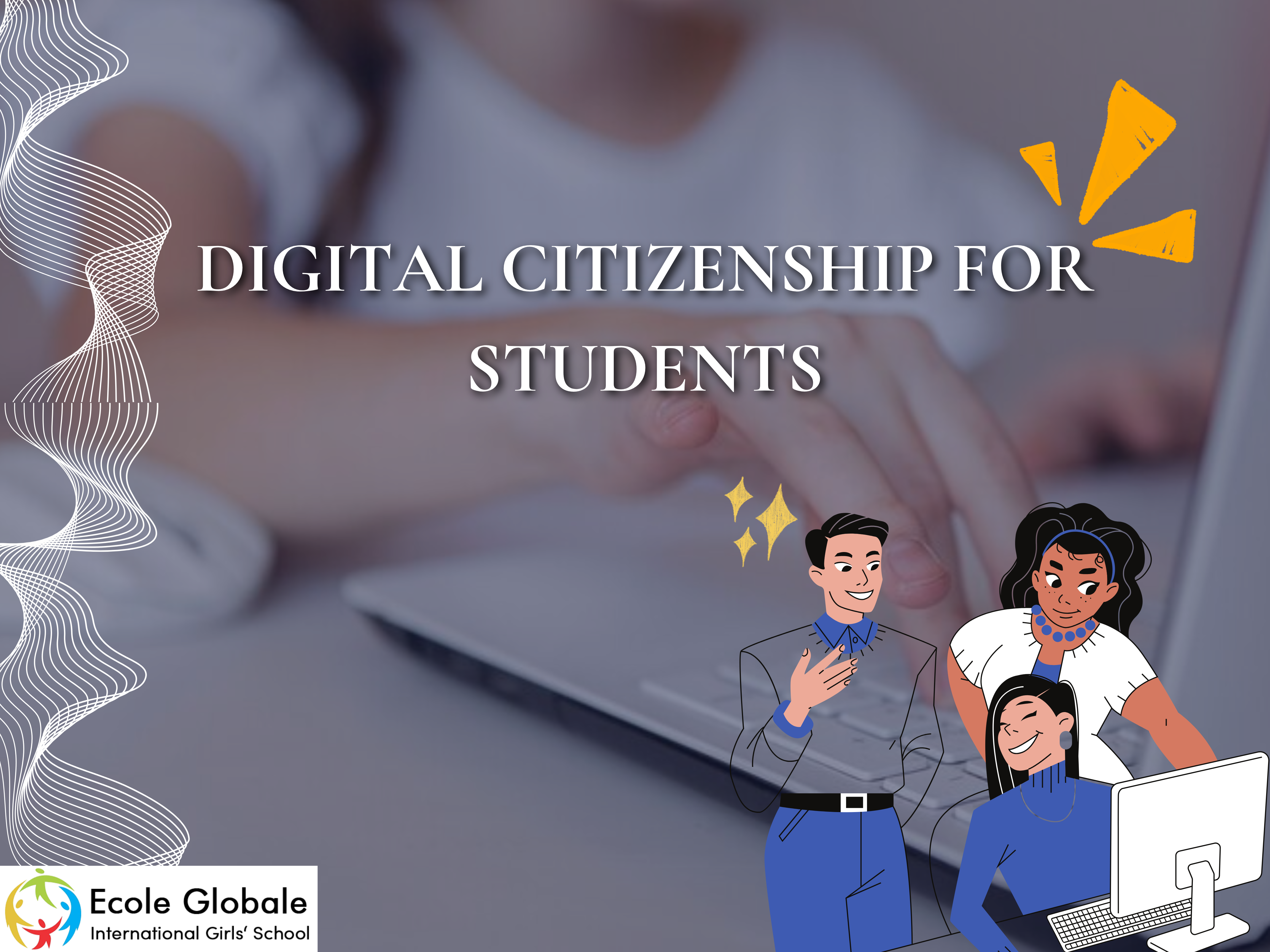In today’s interconnected world, digital citizenship for students is an essential concept. It refers to the responsible, safe, and respectful use of digital technologies.
As students engage more with the internet for education, social interaction, and entertainment, understanding how to navigate the digital landscape responsibly becomes crucial.
Digital citizenship empowers students to make informed decisions online, ensuring their safety and the well-being of others.
Why Digital Citizenship Matters in the 21st Century

Digital citizenship for students extends beyond knowing how to use technology; it instills core values like empathy, accountability, and respect in the digital realm.
In the 21st century, where online interactions are as prevalent as face-to-face ones, students must apply these values consistently across all platforms.
Practicing good digital citizenship helps students become responsible digital community members, fostering a safer and more inclusive online environment.
Core Elements of Digital Citizenship for Students

Privacy & Digital Security
Protecting personal information online is a fundamental aspect of digital citizenship for students. Key points include:
- Protecting Personal Data Online: Students should be cautious about sharing information like home addresses, phone numbers, and school locations.
- Understanding Secure Passwords and Two-Factor Authentication: Creating strong, unique passwords and using two-factor authentication enhances security.
- Safeguarding Digital Identity: Awareness of phishing scams and malicious software is essential to protect one’s digital identity.
Cyberbullying & Online Respect
Addressing cyberbullying is critical in promoting digital citizenship for students:
- Recognizing and Combating Cyberbullying: Students need to identify cyberbullying behaviors and report them.
- Importance of Respectful Online Communication: Encouraging positive interactions builds a supportive digital community.
- Practical Tips for Students:
- Think Before Posting: Reflect on the potential impact before sharing content.
- Empathy Exercises: Understand how messages might be received by others.
Digital Footprint & Online Identity
Every online action contributes to a student’s digital footprint:
- Building a Positive Digital Footprint: Aim to create a digital presence that reflects positively, benefiting future opportunities.
- Making Informed Choices About What to Share: Recognize that online posts can be permanent.
- Understanding the Permanence of Digital Actions: Deleted content may still be accessible, emphasizing careful online behavior.
Media Literacy and Critical Thinking
Developing critical thinking is a cornerstone of digital citizenship for students:
- Recognizing Misinformation and Fake News: Teach students to verify information through reputable sources.
- Practicing Critical Thinking When Consuming Media: Encourage questioning the purpose, perspective, and validity of online content.
Media Balance & Digital Well-Being
Promoting a healthy relationship with technology is vital:
- Finding a Healthy Balance Between Online and Offline Activities: Encourage participation in sports, hobbies, and face-to-face interactions.
- The Importance of Setting Digital Boundaries: Establish specific times for device use to promote self-discipline and time management.
Teaching Digital Citizenship in Schools

Schools play a pivotal role in fostering digital citizenship for students. By integrating these concepts into the curriculum, educators provide students with tools to navigate the digital world responsibly.
Teaching digital citizenship helps students understand the consequences of their online actions and promotes a safer, more respectful online community.
Collaboration between teachers, parents, and the community enhances the effectiveness of these educational initiatives.
Tools and Resources for Teaching Digital Citizenship

Several resources assist educators in teaching digital citizenship for students:
- Google’s Be Internet Awesome Program: Offers interactive games and activities focused on online safety and digital citizenship.
- Common Sense Media Resources: Provides age-appropriate lessons on privacy, cyberbullying, and media literacy.
- Interactive Tools Like Nearpod’s Lessons: Engaging lessons covering essential aspects of digital citizenship make learning dynamic.
These tools offer practical ways for educators to incorporate digital citizenship into their teaching, ensuring students are well-prepared for the digital age.









